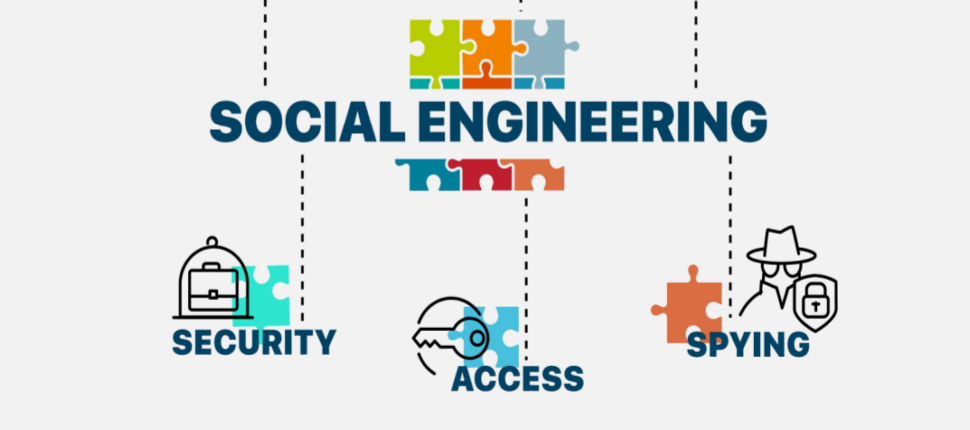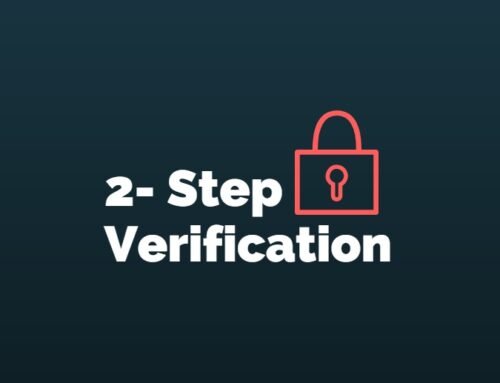
By Amoako Christopher
Unveiling the Art of Identifying Social Engineering Techniques
An attacker called the school’s finance department, claiming to be from the IT department. They said there was a system upgrade or security concern, and that they needed to verify or obtain login credentials to access the school’s financial systems. The attacker creates a sense of urgency, saying that there were dire consequences if their request was not fulfilled promptly. The finance department gave in and gave the attacker the login credentials, which the attacker used to steal a large sum of money. The school’s finance department was left with a huge financial loss and was forced to implement new security measures to prevent future attacks. Does this story or instance sound familiar? That is a typical example of a social engineering case.
What is Social Engineering?
Social engineering is a manipulation technique that exploits human error to gain private information, access, or valuables. Human error is usually a result of trusting someone without question. It’s the mission of a threat actor, acting as a social engineer, to create an environment of false trust and lies to exploit as many people as possible.
Types of Social Engineering
1. Social media phishing: A threat actor collects detailed information about their target from social media sites. Then, they initiate an attack.
2. Watering hole attack: A threat actor attacks a website frequently visited by a specific group of users.
3. USB baiting: A threat actor strategically leaves a malware USB stick for an employee to find and install, to infect a network unknowingly.
4. Physical social engineering: A threat actor impersonates an employee, customer, or vendor to obtain unauthorized access to a physical location.
Causes of social engineering
1. Financial Gain: Social engineering attacks are often driven by the desire for financial benefits. Attackers may attempt to trick individuals into revealing their financial information, such as credit card numbers or banking credentials, to gain access to funds or commit identity theft.
2. Information Gathering: Social engineers may seek to gather sensitive information, such as trade secrets, intellectual property, or classified data, for personal or organizational gain. This information can be used for competitive advantage, espionage, or unauthorized access to systems.
3. System Access: Social engineering attacks may aim to gain unauthorized access to computer systems, networks, or physical facilities. Attackers can manipulate individuals to provide login credentials, install malware, or grant physical access to restricted areas.
4. Exploiting Trust and Relationships: Social engineers exploit the inherent trust people have in their social connections. They may impersonate friends, colleagues, or authority figures to deceive individuals into sharing sensitive information or performing actions against their own interests.
5. Psychological Manipulation: Social engineers leverage psychological techniques to exploit human vulnerabilities, such as fear, curiosity, or sympathy. They may create a sense of urgency, impersonate authorities, or use emotional manipulation to influence their targets’ behavior.
Effect of Social Engineering
1. Data Breaches and Financial Loss: Social engineering attacks can result in the unauthorized disclosure of sensitive data, leading to financial loss for individuals or organizations. Attackers may gain access to bank accounts, credit card information, or personal identification details, resulting in financial fraud, identity theft, or unauthorized transactions.
2. Compromised Security and Privacy: Successful social engineering attacks can compromise the security and privacy of individuals and organizations. Attackers may gain unauthorized access to computer systems, networks, or sensitive information, leading to further exploitation or misuse of data.
3. Reputation Damage: Social engineering attacks can tarnish the reputation of individuals or organizations. If an individual falls victim to an attack and their personal information or credentials are used maliciously, their reputation and trustworthiness may be compromised. Similarly, organizations that fail to protect their customers’ data may experience a loss of trust and damage to their brand image.
4. Legal and Regulatory Consequences: Social engineering attacks can have legal and regulatory implications. Organizations that fail to protect sensitive data or comply with data protection regulations may face legal consequences, fines, or lawsuits. Individuals responsible for carrying out social engineering attacks may also face legal action if caught.
5. Societal Impact: Social engineering attacks can have broader societal consequences. They can contribute to an erosion of trust in online interactions, create a climate of suspicion, and undermine the overall security and stability of digital systems and infrastructure.
How to identify Social Engineering
1. Be wary of unsolicited requests: Be cautious when you receive unexpected phone calls, emails, or messages asking for personal information, login credentials, or financial details. Social engineers often pose as trusted individuals or organizations to trick you into revealing sensitive information.
2. Verify the source: Always verify the identity of the person or organization making a request. Double-check email addresses, phone numbers, and websites to ensure they are legitimate. Independently contact the organization or individual through official channels to confirm the request’s authenticity.
3. Beware of phishing attempts: Phishing is a common social engineering tactic where attackers send deceptive emails or messages that appear to be from reputable sources. Look out for suspicious email addresses, spelling mistakes, grammatical errors, or requests for sensitive information. Hover over links to see if they lead to legitimate websites.
4. Pay attention to emotional manipulation: Social engineers often exploit emotions like fear, curiosity, or sympathy to manipulate their targets. They may create a sense of fear by threatening dire consequences or appeal to your sympathy by posing as someone in need. Be cautious of such emotional triggers and verify the situation independently.
5. Analyze the request or offer: Scrutinize the request or offer being presented to you. Does it seem too good to be true? Is it an unusual or unexpected request? Social engineers often dangle enticing rewards or make extraordinary promises to lure their targets. Exercise caution and critically evaluate the situation.
6. Stay updated on social engineering techniques: Stay informed about the latest social engineering tactics and techniques. Cybersecurity resources, news outlets, and official security awareness training can help you understand emerging threats and develop a discerning eye for identifying social engineering attempts.
7. Trust your instincts: If something feels off or suspicious, trust your instincts. If you have doubts or suspicions about a request or interaction, take the time to investigate further or seek guidance from experts in cybersecurity or your organization’s IT department.
How to Solve or Prevent Social Engineering
1. Robust Security Measures: Implement strong security controls, such as firewalls, intrusion detection systems, antivirus software, and encryption protocols. Regularly update and patch software and systems to address vulnerabilities that social engineers might exploit.
2. User Authentication and Access Controls: Enforce strong user authentication mechanisms, such as multi-factor authentication (MFA), to ensure that only authorized individuals can access sensitive information or systems. Implement appropriate access controls to limit user privileges and reduce the risk of unauthorized access.
3. Security Awareness and Training: Conduct regular security awareness programs and training sessions for employees and individuals. Educate them about social engineering techniques, common attack vectors, and how to identify and respond to potential threats. Foster a security-conscious culture that encourages reporting and open communication about suspicious activities.
4. Regular Security Audits and Assessments: Conduct regular security audits and assessments to identify vulnerabilities and areas of improvement. Engage external experts to perform penetration testing and ethical hacking exercises to identify potential weaknesses that social engineers might exploit.
5. Strong Policies and Procedures: Develop and enforce robust security policies and procedures that address social engineering risks. Include guidelines for handling sensitive information, password management, and response to suspicious requests. Regularly review and update these policies to stay current with evolving threats.
6. Collaboration and Information Sharing: Foster collaboration and information sharing within your organization and with external entities. Stay informed about the latest social engineering techniques, tactics, and threat intelligence to enhance your defense mechanisms.
7. Regular Updates and Training: Keep abreast of the latest social engineering techniques and adapt your security measures accordingly. Continuously update your security controls, policies, and training programs to address emerging threats.








